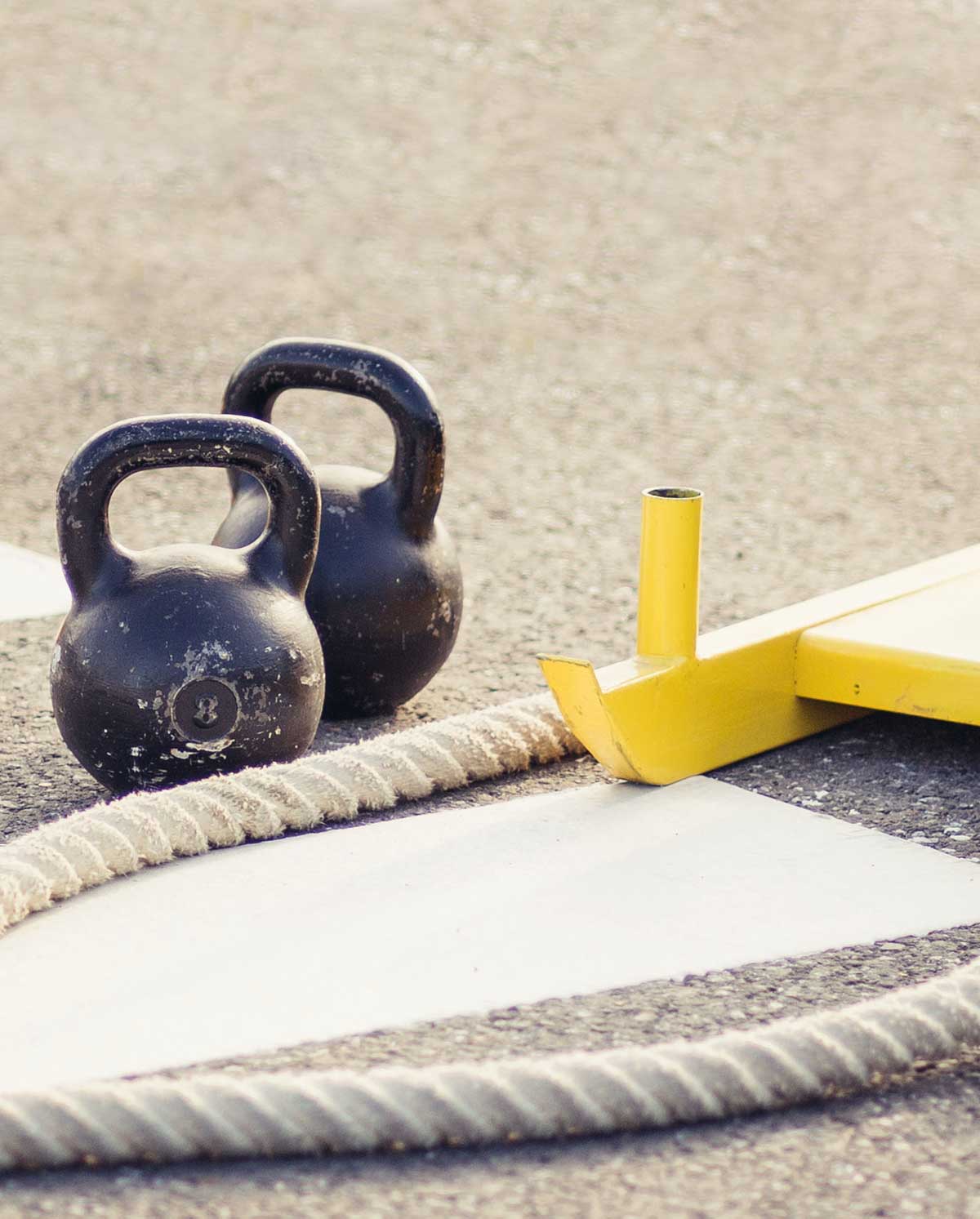By: Emily Beers
I’ve often heard CrossFit fans accuse both Regional and CrossFit Games athletes as being giant fakers when it comes to their apparent closeness and camaraderie.
I understand the logic: In the heat of the battle—in moments where athletes are fiercely competing against each other for just five spots to the CrossFit Games—how could this love, respect and empathy between athletes be genuine? How could Day 1 intense rivals possibly turn into end-of-the-week friends?
But over and over, they insist their love is real.
If you still don’t believe them, maybe you’ll believe science. That’s right, there’s a scientific explanation for the bromances and friendships that form between CrossFit Games athletes: A hormone called oxytocin.

After a weekend of strength, focus, and hard work- the top 5 West Regionals athletes celebrate their podium win. The Oxytocin has kicked in.
In fact, Blonyx athlete Emily Abbott says she relies on connections and friendships with other competitors to get her through stressful competitions like Regionals and the Games (more on this later).
Oxytocin isn’t just something Games athletes experience, though. It might also be responsible for the bonding and tight-knit communities that form in every CrossFit box around the world.
So what is Oxytocin?
As I just explained, the apparent need to bond and support each other during competition might simply be triggered from the presence of oxytocin—a hormone associated with stress. And if there’s one thing all athletes feel at a CrossFit competition, it’s a healthy (and maybe sometimes even unhealthy) amount of stress.
The molecular breakdown of Oxytocin- beautiful enough to frame. Source.
Oxytocin is produced by the hypothalamus and secreted into the blood by the pituitary gland. From here it moves around the body and has an effect on the nerve system and the brain. Physiologically, it induces changes in women during childbirth (including inducing contractions and lactation). During physical or psychological stress it acts as an anti-inflammatory that strengthens the heart, and basically acts as a protection mechanism to heal and recover from the stress. But what I’m more interested in is Oxytocin’s more subtle effects on social behaviour and interaction.
The “Love Hormone”
Oxytocin is also commonly referred to as the ‘love hormone’ or the ‘cuddle hormone’. This is because it is thought to be responsible for stimulating mother-child bonding. Further, new romantic couples tend to have high levels of oxytocin. And guess what gets released when you cuddle? You guessed it: oxytocin!
Digging deeper into the research, it seems oxytocin’s release promotes positive social interactions by enhancing our desire to strengthen close relationships with those around us. An excellent 2012 review on Oxytocin’s potential impact on athletic team cohesion concluded that oxytocin enhances empathy and makes us more likely to interact with and seek support from those around us by promoting trust, generosity, and altruism. It effectively drops our social inhibitions and allows us to bond with those around us in order to help or be helped through stressful times.

Individual athletes yes, but also teammates in the bigger picture. Image source: CrossFit Games
While the latter article only looks at team sports, it’s not a stretch to suggest CrossFit Games athletes rely on each other like teammates, to help them through the weekend. This certainly is the case for Abbott.
Abbott listed fellow 2016 Games athletes Sam Briggs and Christy Adkins as two athletes who are particularly good for the stress levels. What Abbott says she needs to cope with stress during competition is social interaction and support that keeps things light and fun.
"I don’t like the, ‘You’re my enemy and you’re my competitor attitude.’ I feel more like we need to support each other and get through it together,” said Abbott, who added she likes joking around with the other athletes even as they're being corralled for their heat as it keeps the anxiety at bay.
“Sam Briggs is awesome to be around. She’s super light-hearted and always makes a joke and goes out of her way to reach out to others to relieve their stress. And she does it all the time. Right before the final event in 2015, she kept everyone calm,” she said. “Sam is definitely someone I could imagine being in the trenches with."
Despite her love for keeping it light, Abbott admitted it's not always all jokes behind the scene.
She remembers a very human moment in 2015 when Kara Webb passed out after Murph. Though every single athlete was exhausted and was questioning whether or not she could continue, Abbott said, they also recognized Webb was in the worst shape of all and came to her rescue.

Sometimes you're the athlete being consoled, sometimes you're the athlete doing the consoling. Kara Webb would find herself in a similar spot at the Games in 2015. Image source: CrossFit Games
“She was super emotional and was crying, but everyone was hugging her and offering their words to help her get through the rest of the weekend,” Abbott said. “Being there for each other makes the pain we go through a lot more tolerable.”
Another moment that stood out in Abbott’s mind was at this summer’s Games when Becca Voigt was visibly having a really hard time after Murph, Abbott said.
As Voigt walked back to the stadium with a group of athletes, including Abbott, the experienced and poised 9-time CrossFit Games veteran suddenly became vulnerable about her doubts as an athlete:
"She said, ‘People must wonder why I keep doing this. I sometimes wonder why I keep doing this,’” Abbott remembered of Voigt’s words—words that Abbott and the others could relate to.
The group of competitors then started offering their words of advice, doing anything they could to help ease Voigt’s pain.
Being vulnerable, real, uncensored human beings together is one of the things Abbott said helps make the stress of competition more tolerable.

Emily Abbott and Christina Seeley on a flight to Aromas Ranch- an event that started with a 3 a.m. wake-up call Image Source: @crossfitphotojournal
“I remember hanging out with Deanna Fester, Janine Shillington and Alex Parker between events at Regionals this year. Deanna was like, "God damn, I work so hard and was expecting to do so much better." She was disappointed, but she's so funny the way she jokes about it. We started asking each other, ‘Why the hell do we do this to ourselves?’ and then I think I farted and everyone laughed," she said.
Abbott insists the oxytocin-induced friendships that get initiated during competitions also do translate into real life. 2016 Games athlete Christina Seeley and Lucas Parker are two athletes Abbott has become particularly close with.
Parker spent some time with Abbott in Calgary recently on his way to Ottawa, where he is now living.
“We had some great talks about why we do CrossFit, and where we’re headed,” she said.
"And then I tried to get him to do this 8-minute workout with me, and he was like, 'I'm not ready.' And then he laid on the floor and did his belly breathing instead," she laughed.

Blonyx athlete Candice Wagner is another who experienced the oxytocin effect at the 2016 Games and sought support from her fellow athletes to help her survive the weekend:
“The support (athletes give each other) is real. Everyone helped each other out during the good and the bad times. We all went through it and we did it together… Going into the swim event, I was terrified. I hate swimming and I've practiced for so many hours, but I don't have the privilege of swimming in the ocean where I live, so I made it clear to some of the athletes I'm closest to that I just wanted to make it through and get that event over with. It helps me get it off my chest so I like to be honest about how I'm feeling prior to an event…” - Wagner.
Oxytocin, Physical Exertion and Trauma
While it’s well known that oxytocin is released during periods of stress, the actual link between exercise and oxytocin is more complicated and not that well understood from a scientific standpoint. Regardless, when we push our physical limits in both training and competition we create stress that is both physical and psychological (you know the feeling: The, ‘Am I capable of finishing this? Only 104 more burpees to go’ self-talk and the post-workout fetal position). It stands to reason then that CrossFit athletes who spend time in the pain cave are also likely to experience regular doses of oxytocin release.
Going one step further, while it might be a bit of a stretch, I personally don’t think it is out of the question to suggest the CrossFit Games can be a little traumatic (in a good way, kind of like Type II fun). I know it was for me. I still have nightmares about that muscle-up biathlon I barely survived at the 2014 Games.

Emily Beers putting her gymnastics background and CrossFit training to work with muscle-ups.
An article in the European Journal of Psycho-Traumatology—Bonding After Trauma: On the Role of Social Support and the Oxytocin System in Traumatic Stress— suggests social bonding initiated from oxytocin release also helps guard against trauma and heal from post-traumatic-stress disorder (PTSD). In fact, oxytocin is often regarded as the hormone responsible for the camaraderie that occurs between soldiers in the military—as a way of dealing with the inevitable high stress experiences. With this in mind, maybe Games athletes bond the way they do to ensure the experience doesn’t become a traumatic one - another protective mechanism initiated by oxytocin.
Oxytocin for the Everyday CrossFit Athlete
I’ve always said it doesn’t matter what level you compete, the emotions are the same.
I truly don’t think you need to be an elite-level CrossFit athlete to know what athletes like Abbott and Wagner went through in Carson in July.
In fact, if the new science about oxytocin and physical exertion is correct, the effects can even be felt in your everyday training.
I have been a CrossFit athlete for 8 years and a coach for 6. I see it in my gym everyday: The gym creates best friends and support networks like no other I have ever experienced. Some days you’re the one giving the support; other days you’re receiving it, but always it’s a safe place—a place where it’s ok to be vulnerable, where it’s even OK to cry. Thanks Oxytocin for being a key ingredient in the CrossFit community.



